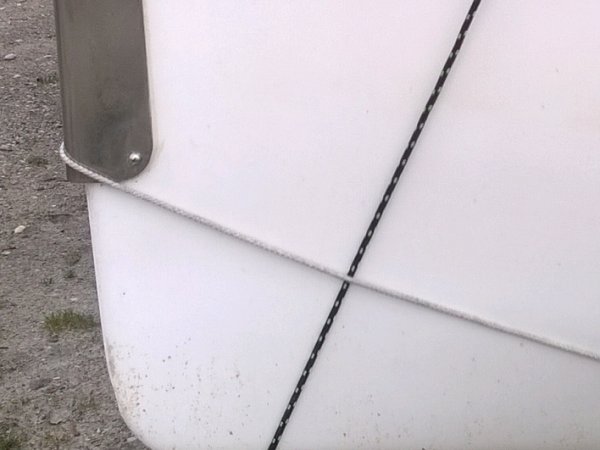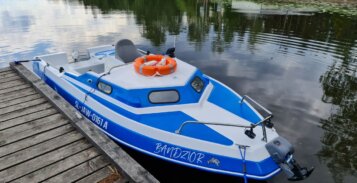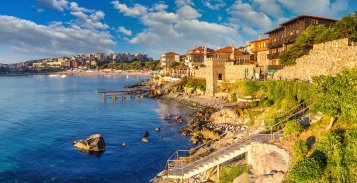
„The holiday period ended and my yacht was left for 2 months in one of the north ports of Giżycko. Sailors know that it is related to the permanent exposure to strong Autumn winds which may contain many pollutions and enhanced probability of the settlement of algae and lichens on the bottom of the yacht. That’s what indeed happened to my Twister. When in November I pulled it out from the port basin, sadly I noticed what I had expected – the bottom was almost completely black due to the lichens.
Just before the arrival, on the Internet I was watching products of various companies and I came across C1 Sea-Line – the anti-fouling product. As a rule, I do not trust new products without getting an opinion about them, but a simple description of use and a comfortable sprayer tempted me to buy this product. While washing the yacht there was a drizzle which made it more difficult to maintain the applied anti-fouling product on the hulk so I continuously had to cover the elements, which I was washing, with a tilt.
At the same time I was hurrying because it seemed that there was going to be a downpour in the evening. In spite of inconvenience and the lack of appropriate equipment (I was spreading the anti-fouling product with a simple brush and the rain was rinsing it), the effect was surprising. Just like it says in the manual, after the second wash, the yacht looked the way it looked like during the regattas – white and fragrant. Anti-fouling C1 is an excellent product for a very affordable price. I have experienced myself that it is worth buying Sea-Line products, therefore during the next season I am going to secure the whole bottom with Sea-Line® S4 Protect Wax.”
We kindly thank Jacek from Warsaw for the materials.

Renovation of the Spanish motorboat Ducauto caribe “Cut in half, gutted and made according to my own concept. The work […]

Opinion of our distributor from Bulgaria, Nicolai from Watersports Equipment – Varna, who works with Sea-Line for 5 years. “Watersports […]

Opinion of our distributor from Switzerland, Jürg from ANWANDER – Näfels. ‘My name is Jürg Iselin from ANWANDER in Switzerland. […]

Opinion of our distributor from Gibraltar, Gaynor from GIBYACHTS – Gibraltar. “Wanted to take few moments to talk to you […]
If the scratches are not deep, then we can renew the scratched side by polishing with Sea-Line polishing pastes. Above the waterline, when the scratches are not deep, the surface can be repaired with a DRY FAST gel coat filler. Deep scratches should be filled with epoxy filler (selected depending on the requirements of the scratched surface), painted with a primer and then painted with topcoat.

Refilling and to tackle inequalities caused by damage to or during the course of production

Protects boat surfaces from the effects of destructive activities osmosis and corrosion

Provide an aesthetic and a perfect look of the boat also protective against water and UV radiation

Protect the hull from fouling with algae and shells

Effectively remove scratches, refresh the color of gelcoat or paint, fast shine effect

Special preparations for effective cleaning and refinishing

Laminating, gluing and filling in cracks in gelcoat

Range of products useful in the boat builder work